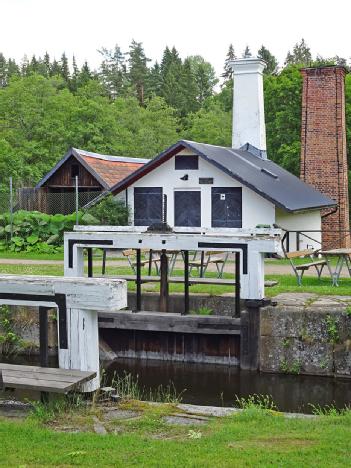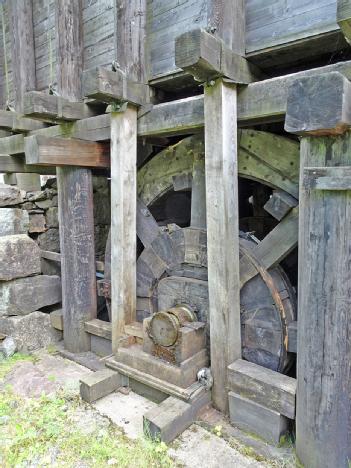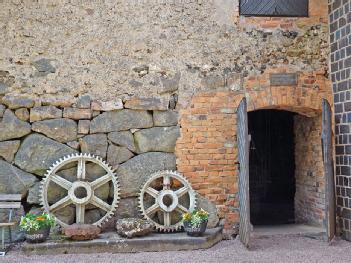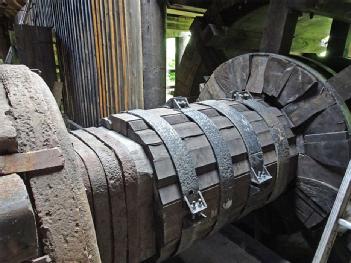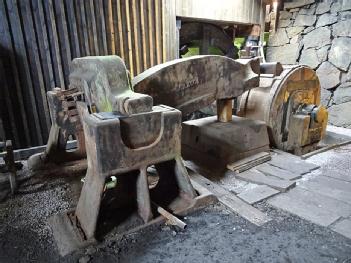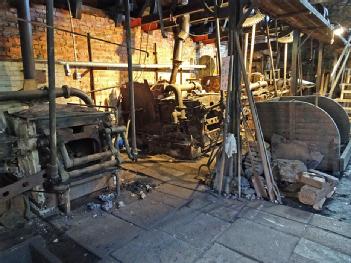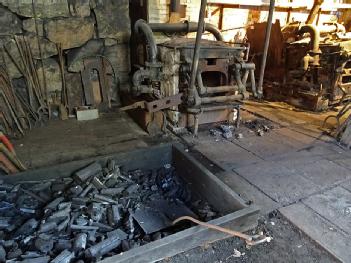
Trångfors smedja |
73491 Hallstahammar, Sweden (Värmlands län) |
|
| Address |
Smedjevägen
|
| Floor area | unfortunately not known yet |
Craft
- Mills
|
Opening times
|
Self-guided tour. Well signposted. Open July Saturday + Sunday: 1pm - 4pm.
The Trångfors day, the third Sun in Aug: 12 - 4pm. Själv guidad tur. Väl skyltade. Öppet juli lördag + söndag: 13 - 16.
Trångfors-dagen, den tredje solen i augusti: 12 - 16. |
||||
|
Status from 11/2019
|
We don't know the fees. | ||||
| Contact |
|
||||
| Homepage | ekomuseum.se/besoksmalen/trangsforsomradet | ||||
| Location / Directions |
Hallstahammar is a locality and the seat of Hallstahammar Municipality in Västmanland County, Sweden. The Trångfors area is a historic industrial area outside Hallstahammar in Hallstahammar municipality. Through the area, Kolbäcksån and Strömsholm's canal go, which enabled hammers, smiths and hydropower plants to be established here. |
|||
| Location / Directions (other) |
Hallstahammar är en tätort i Västmanland och centralort i Hallstahammars kommun, Västmanlands län. Orten är en gammal bruksort med metallindustri som kärna för samhället. Trångforsområdet är ett historiskt industriområde utanför Hallstahammar i Hallstahammars kommun. Genom trakten går Kolbäcksån och Strömsholms kanal som möjliggjorde att hammare, smedjor och vattenkraftverk kunde etableras här. |
|||
| Description | Wikipedia: As early as 1628 the first iron hammer was built. The Trångfors area and its facilities are partially restored and now part of the Ekomuseum Bergslagen. Among the attractions are the smithy from 1799 and the power station from 1899. Trångfors was initially a small industry with only three employees, when the first bar iron hammer was built in 1628 by the merchant Adolf Willemson from Västerås. The hydroelectric power of Kolbäcksån was already used. Here the river formed a waterfall and a narrow river (hence the name). Trångfors forge, undergoing interesting restoration. |
| Description (other) |
Wikipedia: Smedjan Trångfors var till en början en liten industri med bara tre medarbetare, när den första stångjärnshammaren byggdes år 1628 av köpmannen Adolf Willemson från Västerås. Redan då nyttjades Kolbäcksåns vattenkraft. Här bildade ån ett vattenfall och en trång fors (därav namnet). När Strömsholms kanal (invigd 1787 av Gustav III) byggdes drogs den över brukstomten och den gamla herrgården revs. År 1799 uppfördes den nuvarande smedjan, som nyttjade kanalens vattenkraft via en vattenledning i trä. 1875 introducerades lancashiresmidet med fyra härdar, mumblingshammare, vattenhjul och en Bagges blåsmaskin. Produktionen ökade kraftigt och nådde år 1900 en topp med 3100 ton. Smedjan lades ned 1915. Idag är en av smedjans fyra härdar rekonstruerad och kan användas. Den sju ton tunga mumblingshammaren har fått ny sockel. Ett nytt vattenhjul har byggts och installerades 2011. Hjulet har en diameter på 3,6 meter och väger 17 ton. Vid den 28:e Trångforsdagen år 2015 demonstrerades färskning av tackjärn i lancashirehärden och hopslagning av smältorna i mumblingshammaren. Ett mindre vattenhjul driver lancashirehärdens hjälpbrytare och blåsmaskinen. Den vitmålade byggnaden ovanpå smedjan var personalens labbit (paus- och vilorum), idag ombyggt till samlingslokal. Intill smedjan ligger ett stort kolhus från år 1800. Det är ett av de få bevarade kolhusen i Sverige |
[dsp_museum_detail.cfm]
| Data Compliance | More Information |
